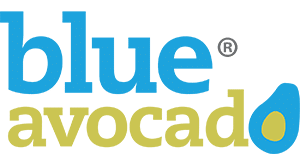Collective Impact: Resistance is Futile
Collective Impact (CI) has covered lots of ground, but like taking naps at work, it should be done strategically and sometimes not at all.

The idea of collective impact is that things can be done much better by working together.
In the past few years, the concept of Collective Impact (CI) has covered lots of ground, often with great results. Concerted efforts can kick some serious butts and do it more sustainably, too. Look at the examples such as Strive and others profiled by consultants and foundations.
CI efforts are characterized by a common agenda, shared measurements, mutually reinforcing activities, constant communication, a backbone organization, and monthly happy hours.
However, like taking naps at work, Collective Impact should be done strategically and sometimes not at all.
Recently, I’ve started seeing it become more and more like the Borg in Star Trek, a species that assimilates other life forms in a quest for dominance and perfection. Controlled by a hive mind that neutralizes any sort of individualism, and comprising billions of annexed individuals, they are strong and terrifying, like an army of zombie robots, each with one eye that has a laser beam. Resistance is futile since any entity that tries to put up a fight is either assimilated, loses its identity or else destroyed.
That, unfortunately, is what it feels like sometimes by those of us on the ground: the nonprofits that work directly with individuals and families. While no one is arguing with the importance and effectiveness of collective impact, it can be a little frustrating.
Three or four times this year, we were told by various funders we need to align with The Borg. (There are several great CI efforts all around, so by “The Borg,” I am not referring to any specific one).
Program officers, who are the Sherpas on the oftentimes Everestian slopes of foundation applications, have seen this shift in paradigm and have been trying to be helpful.
Once in a while, I get a call like this:
Program Officer: I’m calling to provide some feedback on your proposal. Are you in a secure location?
Me: Yes. I just walked into the bathroom.
PO: You need to mention a little bit more about your work with the Borg. The review team is looking for projects that really align with the Borg’s strategy.
Me: All right, we can expand that section. Thank you.
PO: I never called you. This conversation never happened.
Sometimes, we actually align with the Borg, in which case I’m happy to expand on how wonderful it is to be assimilated into the Borg hive mind. But occasionally we do not align. Heck, once in a while it makes no sense to be.
As powerful as the Borg are in Star Trek, they were never able to assimilate members of Species 8472, which look kind of like bugs, but that’s neither here nor there. Species 8472 is just so biologically different and incompatible, assimilation would only lead to disaster.
A parallel can be made with Collective Impact efforts that try to involve communities of color, who have unique strengths and needs. Oftentimes, the first instinct is to assimilate everyone under one umbrella, and that could work. However, sometimes it does not work, and it may not necessarily be anyone’s fault. Several umbrellas may be needed.
Another frustration I’ve seen is funders shifting the funding priorities from direct service work to Collective Impact efforts and backbone organizations. Queries about support for direct impact programs often come back with “Sorry, we are now prioritizing funding the Borg’s work. Maybe you should go talk to them.”
This is extremely frustrating. While the push is for everyone to align with CI efforts, the funding is not equitable. Direct service organizations, especially the ones that focus on communities of color, can only be involved in these amazing, region-wide efforts if we are strong and stable and have credibility with our clients.
Vietnamese Friendship Association (VFA) has been getting requests to join various CI efforts and we have become more and more involved. If we were to shut down our after-school, leadership, parental engagement, and community-building work, no one would approach us, because we would have no connection or credibility. In order for these major collective impact efforts to succeed, funders must continue funding direct service organizations in parallel.
Much more importantly, however, is that clients may not be able to afford the time that it often takes for Borg-like efforts to achieve perfection. CI usually takes years. A kid who is failing school or an elder who needs food doesn’t have years. I just talked to a principal of a school with 90% low-income kids of color.
She would love a common agenda and shared measurements and fully supports the work in this area. But right now her school desperately needs an after-school tutoring program because many students are several grades behind and they go home to empty houses and get no support.
In the Star Trek universe, there are few things more terrifying than a Borg invasion: they sweep through and assimilate or destroy everything. They absorb all resources. Collective impact should not have to be like that.
The premise for collective impact is that we can do things much better by working together than by working in isolation. This is a premise that all of us on the ground fully believe in.
But funding must be equitable and direct service must be simultaneously supported.
Check out Unlocking Potential: Collective Leadership in Nonprofits for other useful info.
You might also like:
- Can You Hear Us Now? Using Feedback to Create Community-Centered Services
- The 3 ‘Rs’ of Equitable Community Engagement
- Four Ways to Remove a Board Member
- Link Arms to Elevate Your Nonprofit’s Impact
- Can Nonprofits Look to the Past to Build the Future?
You made it to the end! Please share this article!
Let’s help other nonprofit leaders succeed! Consider sharing this article with your friends and colleagues via email or social media.
About the Author
Vu Le is the Executive Director of the Vietnamese Friendship Association (VFA) in Seattle. His column, Point of Vu, documents the fun of nonprofit work. Vu also publishes regularly on his own blog, Nonprofit with Balls. He can be reached at vu.le at vfaseattle dot org.
Articles on Blue Avocado do not provide legal representation or legal advice and should not be used as a substitute for advice or legal counsel. Blue Avocado provides space for the nonprofit sector to express new ideas. The opinions and views expressed in this article are solely those of the authors. They do not purport to reflect or imply the opinions or views of Blue Avocado, its publisher, or affiliated organizations. Blue Avocado, its publisher, and affiliated organizations are not liable for website visitors’ use of the content on Blue Avocado nor for visitors’ decisions about using the Blue Avocado website.








I agree completely. If you're a small organization you always have to send the executive director and it ends up being a huge percentage of the total staff time in our organization. I need a grant just to pay for my time going to meetings with the Borg!
The title of his last piece is, “Humor: The Uncomfortable, Terrifying Site Visit”
Great article! Our agency has been involved in a “Borg Collective” for two years and has experienced many of the same issues brought up by Vu. Particularly striking are his observations about the impact of a collective impact strategy on smaller agencies–which in our area tend to serve people of color and be run by people of color. These agencies are trying to get their point of view across to the funders in charge of the CI but are often perceived as troublemakers by the established agencies. How can we get this message out without being dismissed as naysayers?
Well done! I agree completely. I absolutely believe in collaboration, but its really frustrating to hear of funders offering large CI groups money to to pay evaluators and statisticians while denegrating the actual direct work with the service population as "just a bandaid" that should find ways to be self-supporting. (their offices are nicer, too) Ok, that was venting; I'm over it now, i guess.
Thanks Vu! Really thoughtful piece. I responded here with some of my thoughts as well: http://www.fsg.org/KnowledgeExchange/Blogs/CollectiveImpact/PostID/388.aspx